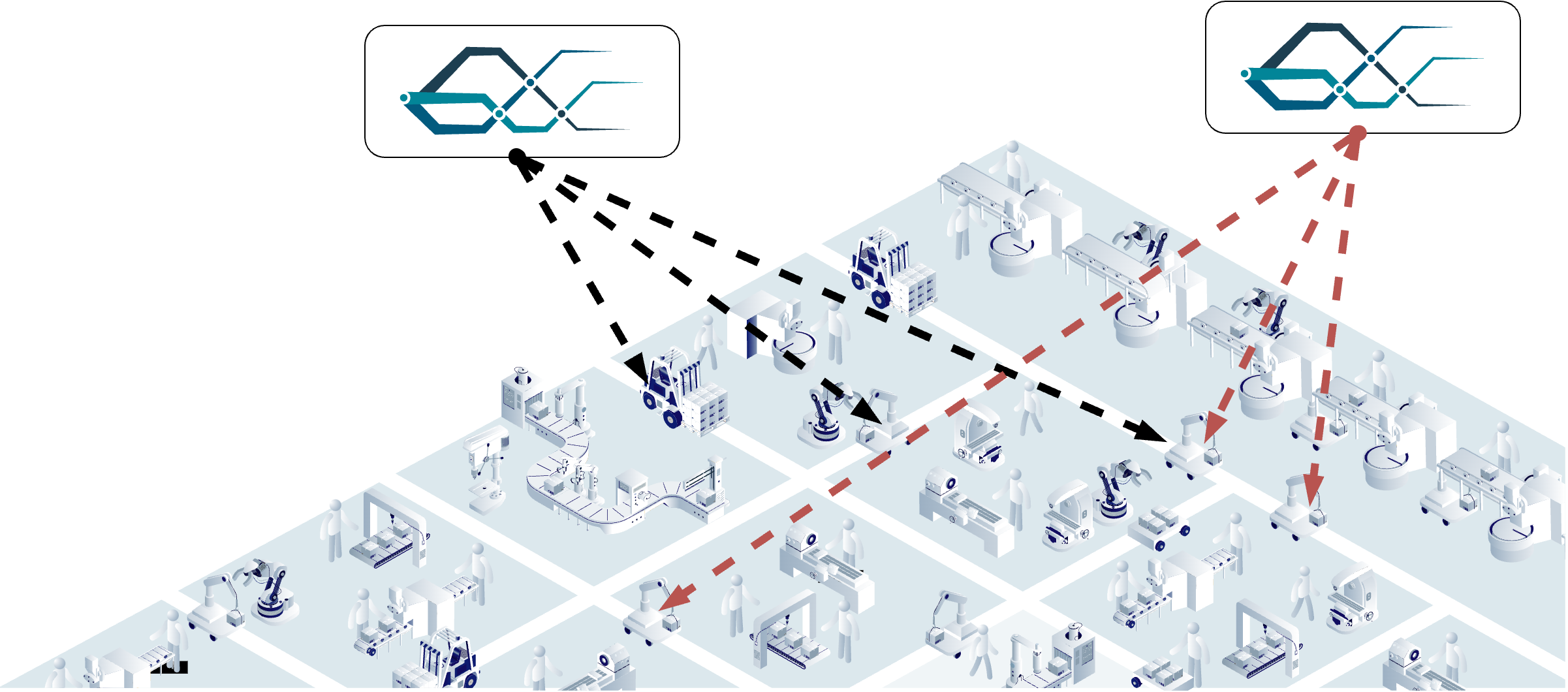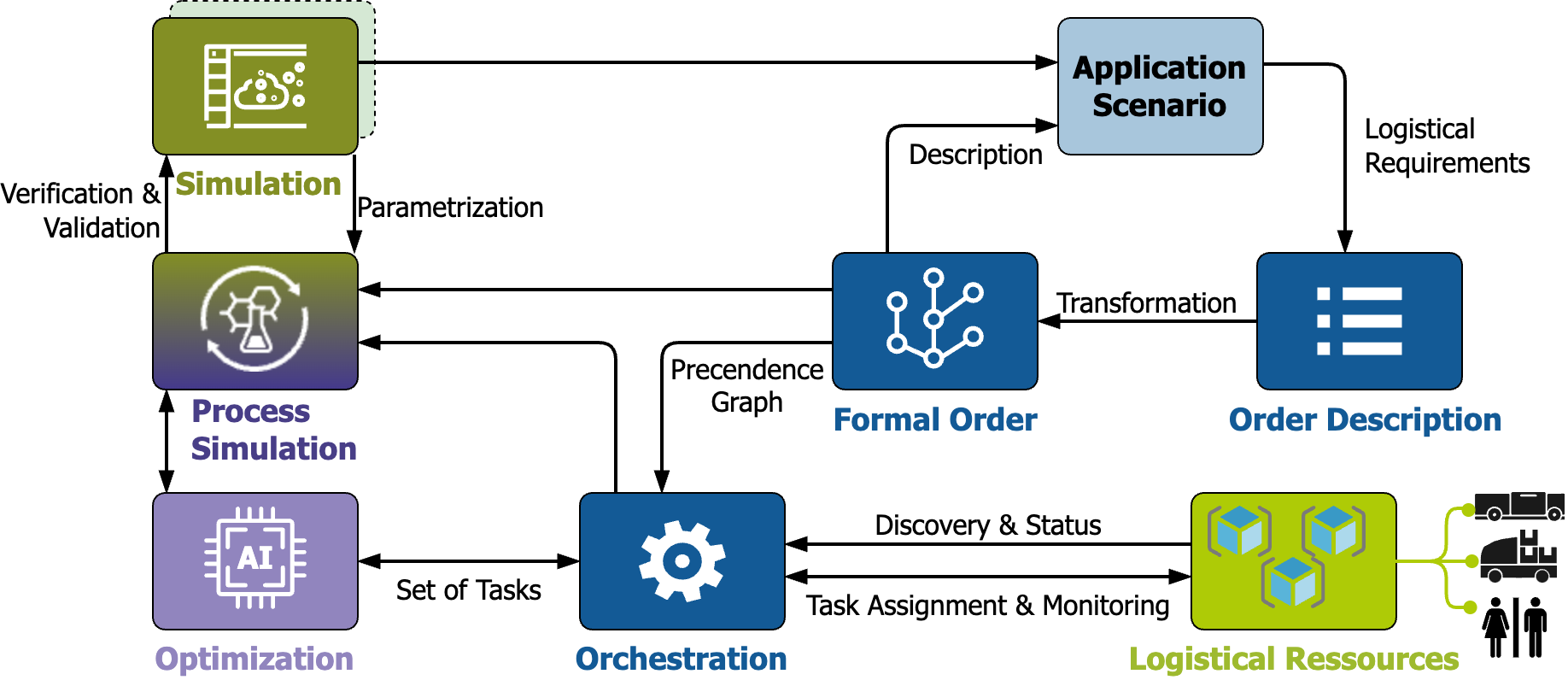Autonomous systems in logistics
Intralogistic material flow processes, such as transports, are becoming increasingly complex. Among other things, this is due to the wide variety of requirements that need to be considered, such as flexibility in terms of planning transports or in increasing resiliency. With the advance of digitization and the interconnection of people, machines, sensors, and actuators, the number of data points worldwide will double by the end of the decade. This will push current systems to their computational limits when all available information will be used. We address this by distributing the intelligence from centralized instances to the individual participants, such as automated guided vehicles (AGVs) or autonomous mobile robots (AMR). This leads to an increase in the autonomy of the individual participants so that they can perform their tasks in a fully autonomous manner.
Large-scale AMR systems (e.g., warehouses with hundreds or thousands of interacting AMRs) will inevitably rely on new planning approaches. Therefore, in addition to auction-based task allocation, we are also investigating new methods and approaches. We deal with centralized and decentralized optimization models that are suitable for systems with a large number of participants and multi-objective problems.
 Fraunhofer Institute for Material Flow and Logistics IML
Fraunhofer Institute for Material Flow and Logistics IML
